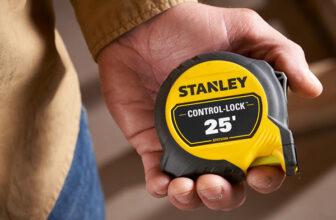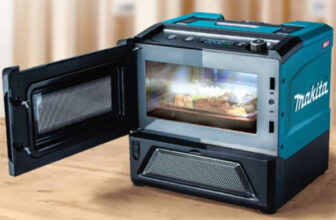
If you buy something through our links, ToolGuyd might earn an affiliate commission.
Once again, I am clearing up my workshop and making space for a full-size table saw. I have an increasing number of projects that require more than what jobsite table saws can easily or safely handle.
I’ve saved up funds for a couple of years, and am ready to upgrade. Maybe.
Which path do I take?
For simplicity, I narrowed down that if I get a traditional western-style cabinet table saw, it’s going to be a SawStop. There are many other brands out there, such as Powermatic, Harvey, and Laguna. I have researched SawStop the most, and their popularity should help with troubleshooting or accessory-compatibility questions that might come up.
SawStop has a couple of accessory options, including a crosscut slider, which sort of takes the place of a miter gauge and shop-made sleds – at least for certain applications.
I like to think I understand the community’s praise and criticisms of SawStop features and quality.
But is that the right style of table saw for me?
European-style woodworking tools are very different, and might be better aligned with my needs. For instance, I don’t plan on ripping 4×8 sheets of plywood on a table saw. It would be nice if I could easily break down 5′ x 5′ sheets of baltic birch on a table saw, but I have a track saw for that.
I want a larger table saw for repeatability and efficiency.
Felder has Hammer-series sliding table saws – the K3 Winner – in a couple of different sizes.
I considered a Felder Hammer jointer-planer for a few years before going with Powermatic. I’m still not sure if I made the right choice.
The Felder K3 Winner looks quite compelling, and from what I’ve seen its sliding table makes a lot of ripping and cross-cut tasks easier and maybe even safer.
Outfitting a Felder machine takes a bit of research as to which accessories are worth it. I haven’t spoken to any sales agents yet, just plenty of reviews online.

Sliding table saws can more easily cut rough-sawn wood, to create a straight and flat reference edge. You can do that on a SawStop or other cabinet saw if you fasten the rough board to something flat and sturdy like MDF, but it’s a bigger hassle.
A track saw can also be used, but it’s not easy or perfectly done on thicker boards. That plus my jointer has worked alright, but it’d be nice to be able to straight line-rip a board in one go.
Can I easily rip-cut boards longer than the sliding table on a K3 or other slider? As long as you have proper outfeed support, that’s easy on a cabinet saw.
Dados are easy on a cabinet saw, but what about a sliding table saw? That’s not a big selling point for me, as I can always use a router.
The choice is a hard one.

There are other brands in the mix as well, such as Maksiwa, a company I am not very familiar with. They are a Brazilian tool maker with a series of panel saws including the BMS.1600.IR shown here.
These are all sizable investments.
Contractor table saws are an option too, but I decided a long time ago to skip the intermediate step and save for a cabinet saw or smaller sliding table saw.
There’s plenty of information about SawStop out there, although I still have tons of questions. There’s far less information about Felder, and nearly nothing about Maksiwa.
Do I even need a larger table saw? I have asked this too. But then I consider how many of my pending projects require rip and cross-cutting of thick hardwood, or repeatedly cutting plywood panels to project dimensions, and the answer is yes.
I plan to work more with hardwood boards and glue-ups than plywood, but any choice I make will have to be versatile.
One can make do with smaller jobsite saws, to an extent. They can be dropped into larger work stations with auxiliary table support, and you can get panel support jigs, collapsible roller stands, and other such equipment to help further extend the support capabilities of smaller saws. But that won’t make up for power or performance shortfalls however.
I don’t have space for a miter station. Setting up my MFT table for cross-cutting boards can be done, but cordless track saws can be slow when cutting thicker and wider hardwood.
My thoughts keep bouncing between “do I really need one?” and “it would be central to the next decade of my woodworking projects.”
There’s a footprint difference. Sliding saws require more clearance, but cabinet saws require outfeed tables. Sliding cross cut table accessories require their own clearance.
SawStop’s website lists all kinds of replacement parts for their PCS table saw. Servicing a Felder machine seems to require a service call where a technician has to get involved.
It’s a tough choice. My credit card will be happy if I keep deferring the decision indefinitely, but my project list keeps growing. Some projects can be tackled with jobsite-size saws, but many cannot, and the improvisation can be much more time-consuming and imprecise.
If I’m prepared to spend the premium for a EU-style sliding table saw, that could bring me from SawStop PCS to ICS (industrial table saw) territory, which I keep hearing is sturdier and much better built. But, that would be overkill for my needs. Right?
Of course, now the idea if an ICS entered my head for the first time. The 3HP 36″ ICS is quite a bit more expensive than the 3HP 36″ PCS, but still less than the base model Felder Hammer K3.
I keep hearing that the PCS is “good enough for most users” and that the ICS has “amazing engineering.” But the price difference between the PCS and ICS would be enough to fund future equipment, at least in part.
I have room for one table saw. I don’t like selling tools, and this is too much for me to donate even after a few years.
The difficult part is that my projects and future plans have changed over the years. I went from only wanting to work on small things, to now also wanting to make functional furniture for my kids and family (such as headboards and display cabinets).
Cabinet and sliding table saws would make immediate tasks easier to accomplish, although neither would be 100% perfect for every planned project, let alone what I might want to work in 5 years.
As for SawStop flesh-detection tech, sliding table saws seem to very effective at keeping one’s hands far away from the blade. If my kids ever get into woodworking, SawStop now has a compact table saw that is far more portable than their jobsite saw. I have a sample on-hand, and have been pleased with it so far. I think that, once I eventually donate it, I won’t have any qualms about buying a personal copy if ever needed.
Setup is also a concern of mine. I have a 220V 30A outlet, which should work for 3HP and even 5HP machines, and I plan to add more outlets in the future. As for the physical setup of machines to get them onto mobile bases and into place, that’s a challenge with every piece of equipment. One of these days I’ll need to invest in a gantry or hoist.
I’m hoping not to put off the decision for much longer – prices and freight shipping rates keep going up, and I’m getting tired of so many projects being on-hold.
Yes, I know, pricey tools aren’t a substitute for skill and effort, but there’s a time consideration. It can sometimes take a few hours to do the same operations that would completed in minutes on a larger table saw.
Since there’s review and content potential behind this potential purchase, ToolGuyd is prepared to foot the bill for me. Otherwise, for my personal needs, I might have simply went with the cheapest option. Well, I still might.
I have been leaning towards Felder, but I have my hesitations.
I don’t expect readers to make the decision for me, but am hoping for questions or feedback that can help guide my decision past this impasse once and for all.






